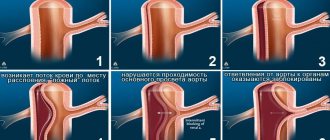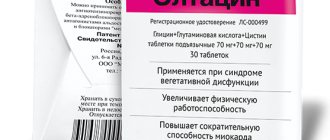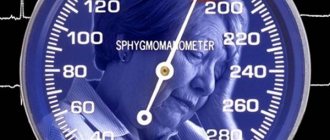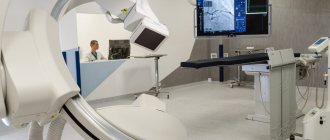Autonomic-vascular crises are psycho-vegetative symptoms that arise as a result of functional or morphological structures of the brain and are manifested by a variety of vegetative-neurological and endocrine-metabolic symptoms. In children, vegetative crises are mainly observed in prepubertal and pubertal age.
Differential diagnosis: hypoglycemic coma, attack of bronchial asthma, acute abdominal pathology, convulsive syndrome, hypertensive crisis.
What is a vegetative crisis, how is it classified?
A vegetative crisis is an extreme form of expression of VSD (vegetative-vascular dystonia), which is characterized by a disorder of the nervous system. In the International System of Classification of Diseases (ICD), this pathology is coded F 41.0.
The classification of vegetative crises is carried out according to several types, which is determined by the severity of the disease and the totality of the existing symptoms.
Depending on the severity of the course, a vegetative crisis can be:
- light – lasts a maximum of half an hour. Accompanied by minor but characteristic violations;
- medium – lasts about an hour. This form is characterized by multiple somatic disorders with the further formation of asthenia (neuropsychic weakness), which persists throughout the day;
- severe – lasting more than an hour. The appearance of various disorders is noted, accompanied by various paroxysms and the subsequent development of asthenia, which persists for several days.
In modern medicine, vegetative crises are also divided into 4 types in accordance with the symptoms that appear. According to this classification they are:
- sympathetic-adrenaline. Manifested by severe anxiety, discomfort in the heart, rapid pulse and high blood pressure;
- vagoinsular. The patient feels his heart sink, then notes the onset of weakness, lack of air, and a decrease in blood pressure;
- vegetative-vestibular. In this case, the person complains of dizziness, vomiting, which appears with a sudden change in posture: turning the head, bending over and other movements;
- hyperventilating. Manifests itself in the form of rapid breathing, increased blood pressure, dizziness, and muscle tone.
The occurrence of any vegetative crisis is acute and unexpected for a person. Sometimes it can appear at night. But such a phenomenon is not dangerous and does not threaten the patient’s life. Although at first glance the clinical picture is quite scary, the attacks always stop, so you should not be afraid of them.
Mixed and hysteroid crises
Mixed crisis - characterized by a combination of the above symptoms.
Hysterical (fainting-tetanic) crisis - characterized by tachycardia, hysterical hyperventilation, increased blood pressure, tremor and local convulsions, but there may also be generalized tetany.
Emergency care for mixed and hysteroid crisis
- Inject intravenously or intramuscularly 0.5% seduxen solution 0.05 ml-0.1 ml/kg, but not more than 2.0 ml.
- In case of incomplete relief of a convulsive state, administer 20% sodium hydroxybutyrate solution 0.25-0.5 ml/kg intravenously.
Why does a vegetative crisis develop?
At present, the sources of this problem have not been fully investigated. Although some factors have been identified that can provoke the onset of a vegetative crisis. These include:
- tendency at the genetic level;
- hormonal imbalances (menopause, pregnancy, abortion);
- frequent stress, mental disorders (death of a loved one, difficulties with work or personal life);
- endocrinological pathologies;
- disturbances in the functions of the central nervous system;
- heavy physical activity;
- alcohol addiction;
- long-term treatment with potent drugs.
Scientists and psychotherapists have created a general description of subjects predisposed to this disease. Representatives of the weaker sex are more susceptible to vegetative crisis, who are characterized by the presence of:
- artistry;
- instability of thoughts;
- inclinations to dramatize any situation;
- constant expectation of troubles, fear of them;
- inadequate response to criticism;
- constant desire to improve your own figure.
It is precisely such people who are prone to developing unreasonable panic attacks, in which there is a feeling of anxiety and fear. Moreover, somatic symptoms are pronounced.
Signs
The first symptom of the onset of a vegetative crisis is a strong feeling of anxiety that appears unexpectedly and without cause. It is impossible to predict what will trigger the next attack, which is why the patient is constantly in a feeling of fear.
During the development of an attack of vegetative crisis, adrenaline is sharply released into the bloodstream. As a result, a person feels the appearance of:
- rapid pulsation;
- lack of air;
- acute headache;
- tremors in the limbs;
- chills, increased sweating;
- discomfort in the heart area;
- severe weakness;
- dizziness;
- presyncope;
- fear of dying.
During an unexpected attack, a person may experience the development of several of the above symptoms, or all of them at the same time. The peak of the attack occurs after 10 minutes; when it ends, the patient begins to feel lethargic and drowsy; over time, the condition returns to normal without any complications.
During a vegetative crisis, the patient experiences severe stress. He develops a fear of a relapse, which contributes to the development of a second attack even under minor negative conditions. Another attack can be triggered by an unfamiliar environment, being in a confined space, or the threat of some kind of penalty.
Vagoinsular crisis: symptoms of the disease
Due to a sharp release of insulin into the blood, a decrease in sugar levels occurs - a hypoglycemic state. Signs of this pathology include severe weakness, sweating, feeling hot and a drop in blood pressure. Due to paroxysm, a person may lose consciousness within a few minutes from the onset of the listed symptoms. Since the vagus nerve regulates the functioning of internal organs, the following changes are noted:
- Bradycardia and hypotension.
- Dyspnea.
- Abnormal stool.
- The appearance of red dermographism.
- Heart rhythm disturbance.
Vagoinsular vegetative crisis can develop suddenly or gradually. In the first case, the patient instantly loses consciousness. Hemodynamic disorders are noted. Sometimes a crisis has a wave-like course. Symptoms gradually increase: weakness, deterioration, chills, sweating, hunger and nausea. These manifestations are replaced by a temporary improvement in well-being. Then they appear again.
Diagnostic methods
Determining the presence of a vegetative crisis is quite difficult even for an experienced specialist. To confirm the diagnosis, a comprehensive diagnosis is necessary, which includes a medical examination, assessment of reflex functions, ECG, pulse check, blood pressure, etc. Only after receiving the results can we make assumptions about the presence of a vegetative crisis in the patient. The disease can be accurately diagnosed only when the attack is over by excluding the following ailments and conditions:
- cardiac dysfunction - requires 24-hour cardiac monitoring, stress ECG, and cardiac ultrasound;
- stroke, brain tumors - CT and MRI are required;
- vascular crisis - encephalography and CT are performed;
- bronchial asthma – it is necessary to carry out breathing tests and skin tests to determine allergies;
- internal blood loss - you need an ultrasound of the peritoneal and pelvic organs;
- hypertensive vegetative crisis - CT or MRI is performed;
- mental disorders - examined by a psychiatrist.
When all of the listed pathologies are excluded and it is determined that the peak of the crisis occurs 10 minutes after the onset, and in addition an anxious feeling or deep-seated fear appears, the patient is diagnosed with a vegetative-vascular crisis.
In some cases, a similar diagnosis is given to children. The cause of this phenomenon may be psychological trauma or stress. As a rule, the development of a vegetative crisis in childhood is caused by quarrels in the family.
Causes of vegetative-vascular crises
The causes of crises during VSD are determined by the peculiarities of the cardiovascular system, as well as various vascular and nervous pathologies observed at different ages. Among the most common reasons it is worth highlighting:
- Autonomic dysfunctions in children.
- Uneven growth of internal organs and the formation of the hormonal system during puberty.
- The presence of chronic depression and stress.
- Spinal diseases.
- Endocrine diseases.
- Disturbances in the functioning of the gastrointestinal tract.
- Hormonal changes in the body during menopause.
Possible consequences
The vegetative crisis itself does not cause harm to health, but if attacks occur frequently, this is fraught with serious consequences. The patient begins to suffer from numerous phobias: fear of dying, being in a confined space, etc. Due to frequent attacks, heart function may be impaired, and sudden changes in blood pressure may develop. In addition, problems with the digestive organs and nerves may appear.
Fear of developing another attack can affect personal characteristics. Often such people try to communicate less with others, which is why they become withdrawn, and sometimes they may develop inappropriate behavior.
Possible complications of the crisis
If vagoinsular crises occur repeatedly, a full examination should be performed. These conditions are dangerous to health. Severe hemodynamic disorders can lead to disruption of blood supply to the heart muscle, brain and other organs. Complications of a crisis include pathologies such as heart attack and stroke, cardiogenic shock, acute renal failure, and hypoglycemic coma. All of these conditions can be fatal. Therefore, it is important to eliminate the causes of vagotonia.
How to treat manifestations of a vegetative crisis
To treat a vegetative crisis, an integrated approach is used, which includes not only medications. In accordance with the patient’s complaints, the doctor determines the duration of the attacks, the severity of the symptoms, and only then prescribes medications. In addition, the patient must learn to overcome attacks independently.
Drug treatment
For this disease, symptomatic therapy is prescribed. To stop an attack, the following may be prescribed:
- for cardiac dysfunction - Valocordin, Corvalol or Anaprilina;
- to eliminate anxiety - Relanium or Clonozepam;
- A course of treatment with antidepressants under medical supervision is also prescribed.
In addition, it will be necessary to treat somatic pathologies and abnormalities in the functions of the central nervous system identified during the diagnosis. The same actions can be used to stop an attack of vegetative crisis.
Non-drug treatment
A person diagnosed with a vegetative crisis must learn to identify the symptoms of an approaching attack and overcome it on his own. Breathing exercises are suitable to eliminate the problem. With proper and slow breathing, a large amount of oxygen enters the body, which helps reduce the severity of symptoms that appear during an attack. The supply of carbon dioxide to the body is also effective. For this purpose, you can use a paper bag to exhale and inhale into it.
If there is a suspicion that an attack has begun, the patient is advised to change the environment. To do this, you need to leave the room or transport, try to pay attention to the surrounding nature to distract your thoughts.
Vagoinsular crisis: treatment of the disease
To stop paroxysm, symptomatic treatment is prescribed. Drugs are prescribed to restore cardiovascular activity, increase blood pressure, and relieve shortness of breath. Symptomatic therapy for a severe crisis is performed in a hospital. To increase blood sugar levels, a 5% glucose solution is administered intravenously. This helps increase circulating blood volume and raise blood pressure. If cardiac arrhythmias develop, the drug “Cordiamin” is administered. To improve blood circulation in the brain and combat dizziness, the drugs Vestibo and Betaserc are prescribed.
Vagoinsular crisis in young children is most often not accompanied by severe symptoms, in contrast to the paroxysm observed in adults. In most cases, it goes away on its own. A feature of childhood crises is that the attacks are short-lived. On average, an attack lasts about 5 minutes. The child should be given warm sweet tea and calmed down. To prevent paroxysms from recurring, it is necessary to find out the cause of the attack.
Preventive actions
There is no specific prevention that will help prevent the formation of the disease. Although there are recommendations on how to help the body quickly overcome attacks. To do this you will need:
- maintaining a healthy lifestyle, giving up alcohol;
- in the moments between attacks, you can take folk remedies that have a sedative effect (valerian, peony, motherwort in the form of tincture);
- Periodically visit a psychiatrist to develop stress resistance.
If you wish, you can overcome an attack of vegetative crisis. However, this will require strict adherence to your doctor's advice. Timely therapy is a serious prerequisite for eliminating the problem.
To undergo diagnostics and prescribe a course of treatment, contact our medical (formerly NDC) on Gakkelevskaya 33. Click the “SIGN UP” button, get advice from our specialists and come to us. We will help you cope with the disease.











